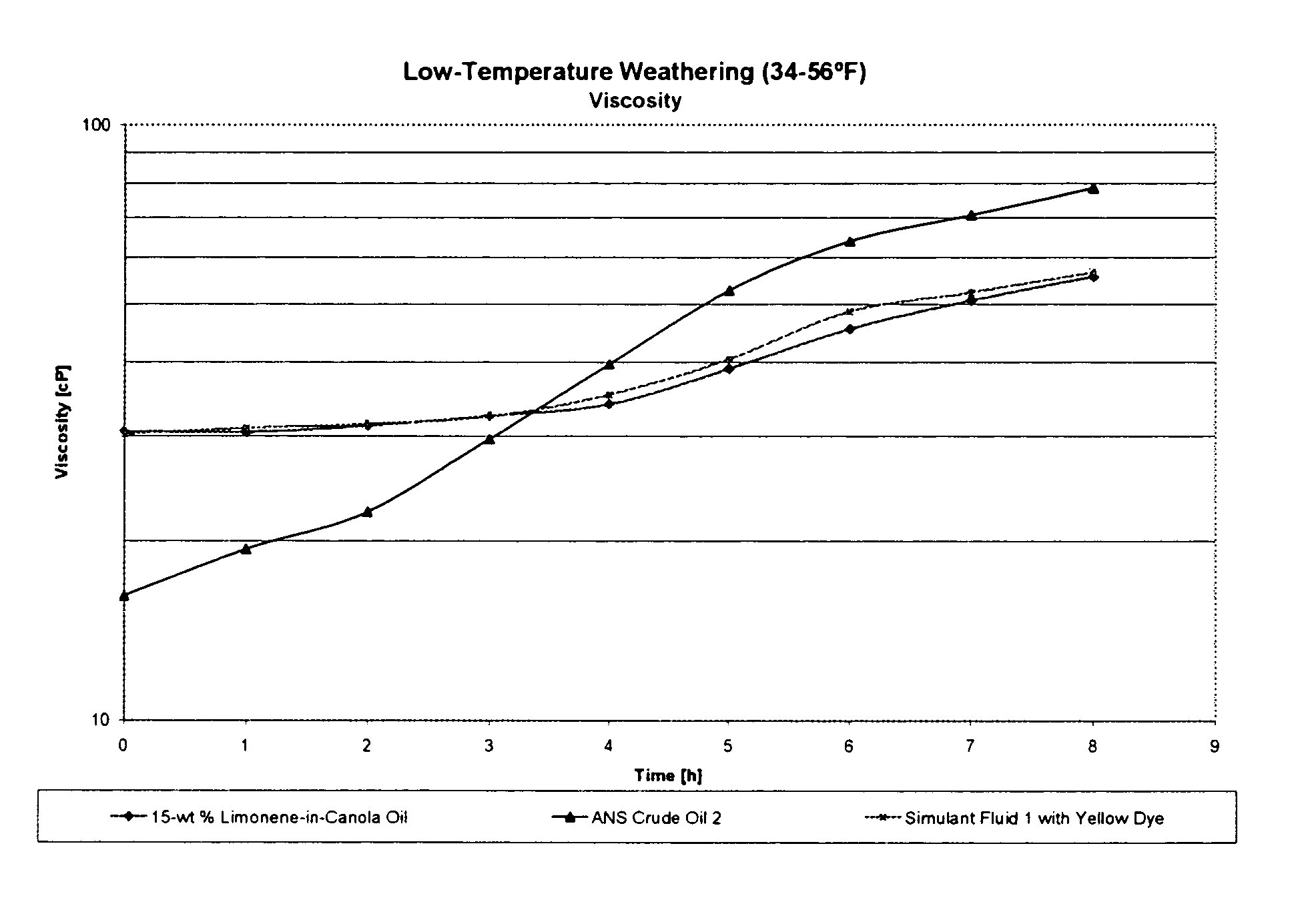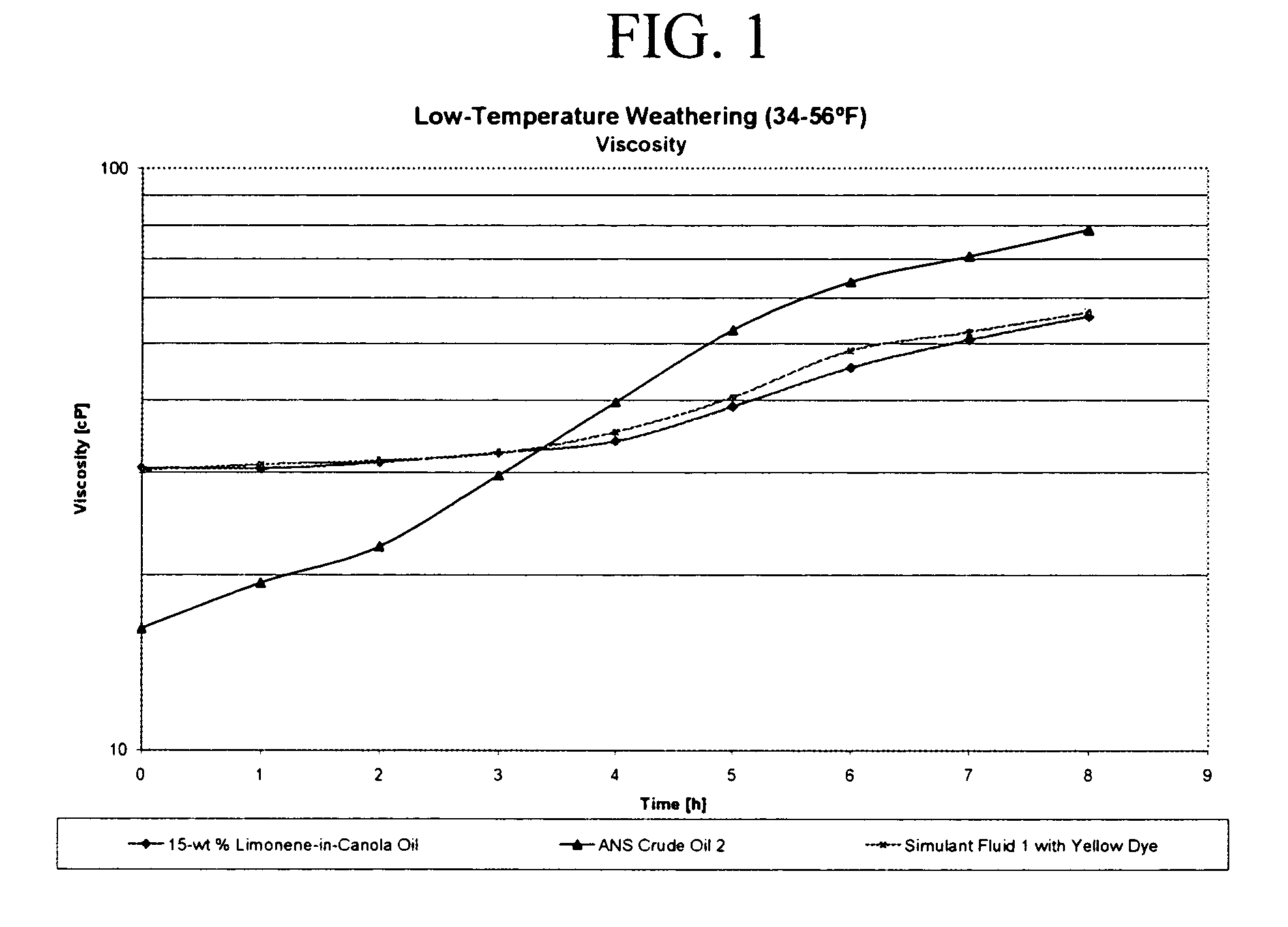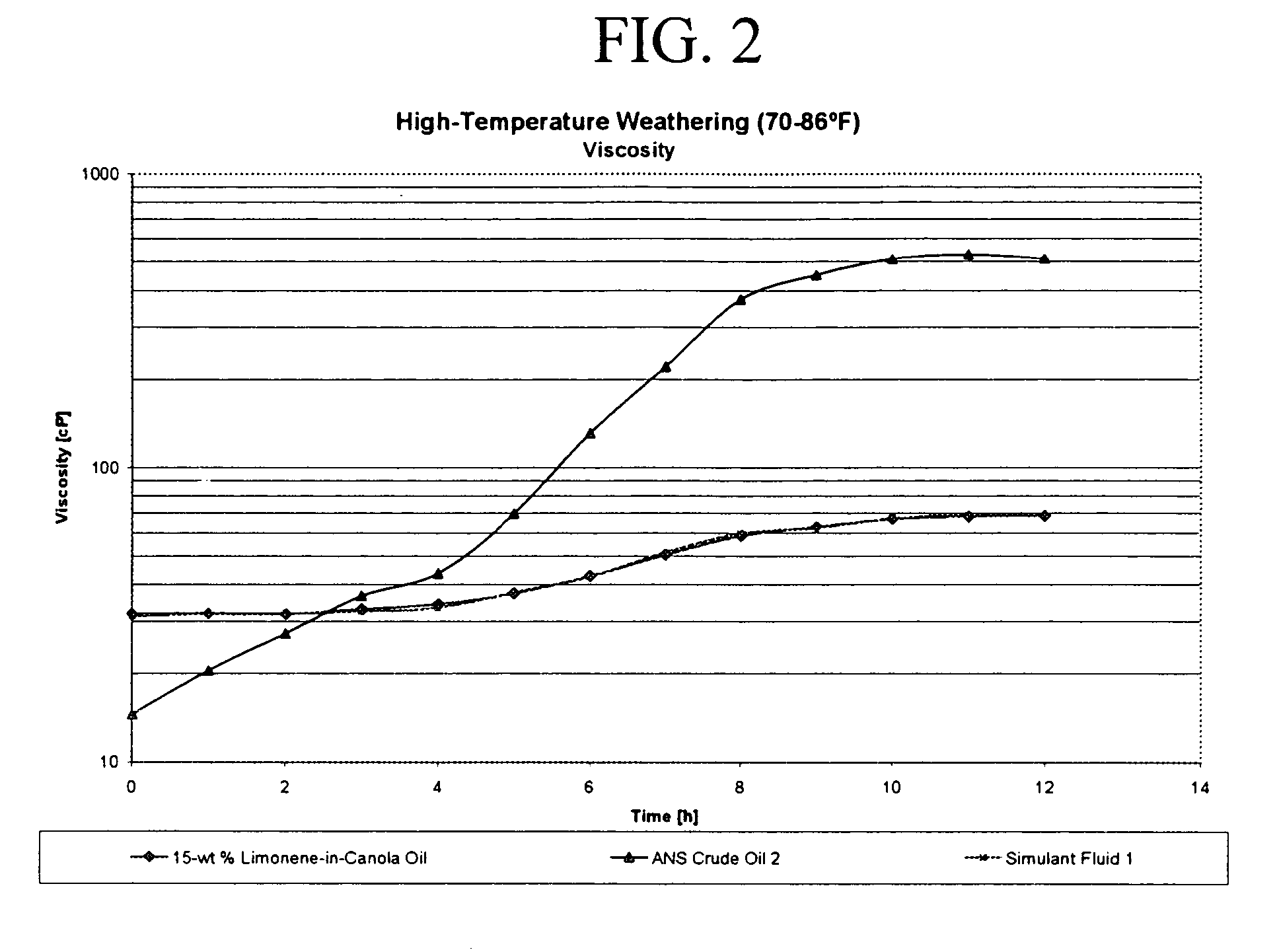Non-emulsion based oil simulant
a non-emulsion, oil simulant technology, applied in the direction of lubricant compositions, fuels, wellbore/well accessories, etc., can solve the problems of limited usefulness, difficult to develop and/or optimize effective contingency plans, and well-designed oil spill contingency plans can not only facilitate, and achieve the effect of accurate approximation of actual oil spill behavior, not adversely affecting the environment, and similar physical, chemical and rheological properties
- Summary
- Abstract
- Description
- Claims
- Application Information
AI Technical Summary
Benefits of technology
Problems solved by technology
Method used
Image
Examples
example 1
[0044] Canola oil and d-limonene are used in the following non-emulsion oil simulant fluid mixture examples. The recommended oil simulant fluid contains 84.9 wt % canola oil and 15.0 wt % limonene, and 0.1 wt % photochromic dye PHOTOSOL®7-106 (wine purple). The limonene is added to the canola oil, followed by the dye. Slight agitation via shaking or stirring is typically performed, but is not required. Fluids requiring the addition of BHT are created with the above mixture modified for a 3.0 wt % addition of BHT. In these cases, the composition includes 81.9 wt % canola oil, 15.0 wt % limonene, 0.1 wt % photochromic dye, and 3.0 wt % BHT.
example 2
[0045] An alternate use of the simulant fluid is the development of an environmentally-friendly lubricant fluid. This fluid is a mixture of canola oil (97.0-wt %) and BHT (3.0-wt %) only.
[0046] The above non-emulsion simulant fluid formulations are provided in Table 1 below.
TABLE 1Example Simulant FluidsNon-EmulsionSimulantSimulant FluidCompositionPractical Simulant FluidFluidComponent[wt %]Uses and Applications1Canola Oil84.90Terrestrial, freshwater, andd-Limonene15.00seawater applicationsPhotosol ® 7-1060.102Canola Oil97.00Environmentally-FriendlyBHT3.00Lubricating (Green) Fluid
[0047] The weathering data illustrated in terms of viscosity for lower and higher temperature tests are given in FIGS. 1 and 2, respectively. FIG. 1 shows low temperature (34-56° F.) weathering tests over an 8 hour period for Simulant Fluid 1 and Simulant Fluid 1 with a yellow dye. The overall trend of increasing viscosity with time is similar. Further, the viscosity of the ANS crude oil is approximated ...
PUM
 Login to View More
Login to View More Abstract
Description
Claims
Application Information
 Login to View More
Login to View More - R&D
- Intellectual Property
- Life Sciences
- Materials
- Tech Scout
- Unparalleled Data Quality
- Higher Quality Content
- 60% Fewer Hallucinations
Browse by: Latest US Patents, China's latest patents, Technical Efficacy Thesaurus, Application Domain, Technology Topic, Popular Technical Reports.
© 2025 PatSnap. All rights reserved.Legal|Privacy policy|Modern Slavery Act Transparency Statement|Sitemap|About US| Contact US: help@patsnap.com



